User Experience Guide
Request a demo

Attempting to increase revenue requires that eCommerce managers and marketers pay close attention to three key performance indicators (KPIs). Namely, Conversion Rate (CR), Average Order Value (AOV) and Revenue Per Visitor (RPV).
Although each of these KPIs is important, none should be measured in isolation. Doing so often leads to unwanted blind spots; situations where an increase in one metric is accompanied by a decrease in another, leading to an overall decrease in revenue. That's what makes RPV great, it merges both CR and AOV into one measurable metric without leaving any blind spots (i.e. RPV = AOV * CR).
While all eCommerce businesses need to drive revenue, only newly established retailers (i.e. those with no revenue or customers) should put 100% of their time and effort into traffic acquisition as a means of driving revenue. However, after initial traction (i.e. after the first million in sales), marginal returns from an acquisition-only strategy diminish. Once passed the one million in revenue line, more work is required to achieve the same results.
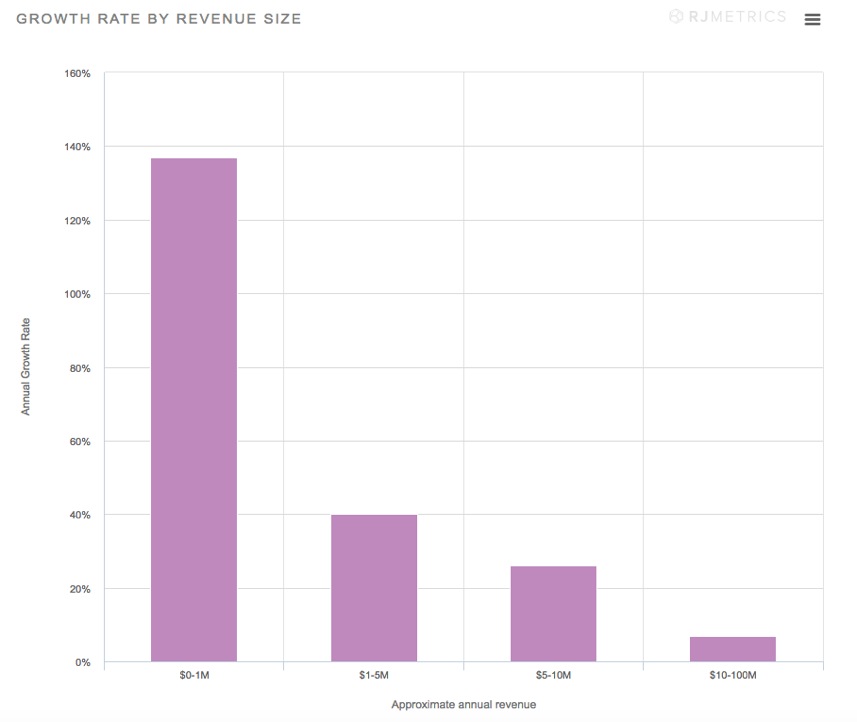
Unfortunately, most established eCommerce marketers today focus all of their energy and budgets on increasing traffic when it would make much more sense to increase AOV, CR and retention.
Once visitors are acquired and transactions begin to roll in, increasing revenue should include two additional dimensions: converting more visitors into paying customers (CR) and increasing customer spend per conversion (AOV).
Driving traffic to a website costs money, but finding ways to increase AOV and CR generally does not (or costs very little comparatively). And since there is a cost associated with each order, increasing AOV is a direct way to gain revenue at little extra cost.
There are several problems with focusing all your marketing efforts and budget on traffic acquisition. And this problem is amplified the longer the company has been in business.
Simply put, if visitors don't convert, basket size doesn't grow over time and customers don't return, then a great deal of acquisition spend is wasted. Worse yet, there is an opportunity cost since converting a greater proportion of visitors into customers, up-selling customers and retaining loyal customers are more efficient and effective methods of driving revenue than acquisition tactics.
In this situation, the pursuit of a bigger market share is akin to filling a leaky bucket with water. Since some customer churn is inevitable, companies looking to maintain their market share need to be at least as good at acquiring customers as they are bad at losing them.
But to grow market share, they must be either super-human at acquisition or exceptional at retention. The best strategy existing somewhere in the middle - combining traffic acquisition with conversion rate optimization, cross-selling/up-selling and customer loyalty.
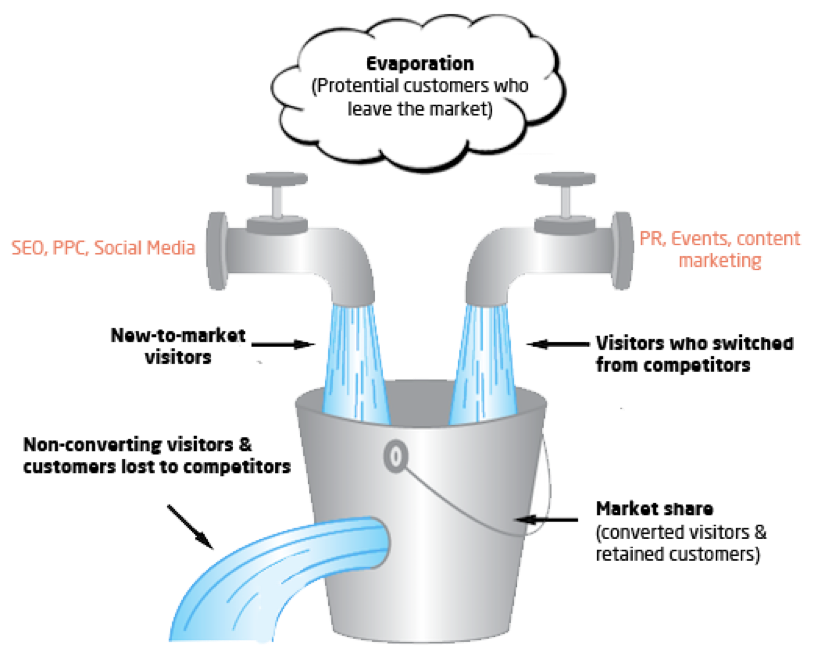
While there are numerous proven ways of increasing CR and AOV, including:
But the vast majority of eCommerce businesses miss the opportunity to drastically improve CR and AOV with more relevant site-search.
Improving eCommerce site-search is one of the most direct ways of increasing CR and AOV. Basically, visitors who search have purchase intent and know what they want. Not giving them accurate and relevant search results not only leads to poor customer experience, it almost always means lost sales.
On the other hand, having highly relevant site-search that actually attempts to capture customer intent can lead to conversion rate and revenue growth unmatched by most other CR initiatives.
We're talking top-line revenue growth of 10-20%, search conversion rate growth (i.e. conversion rate among visitors who search) of 30-50%, AOV growth of 75% and search page exit rate reductions of 70%.
Here are some examples:
Another one of our customers - Kontorsmagasinet - did an extensive of A/B test to measure the CR and AOV impact of having more relevant site-search. After a 35 day 50/50 split test, Kontorsmagasinet realised the following results:
| Control | Optimised search | Difference | |
| Search conversion rate | 6.27% | 8.12% | +29.5% |
| Total eCommerce revenue | 100% | 112.98% | +12.98% |
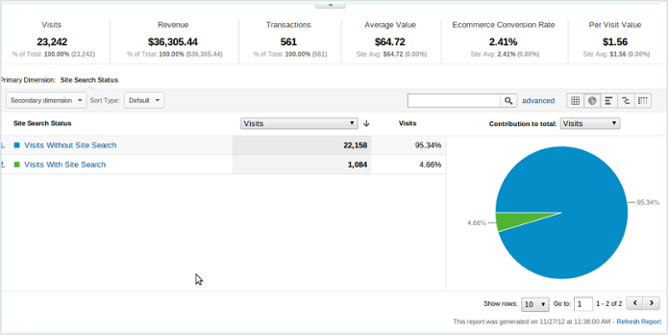
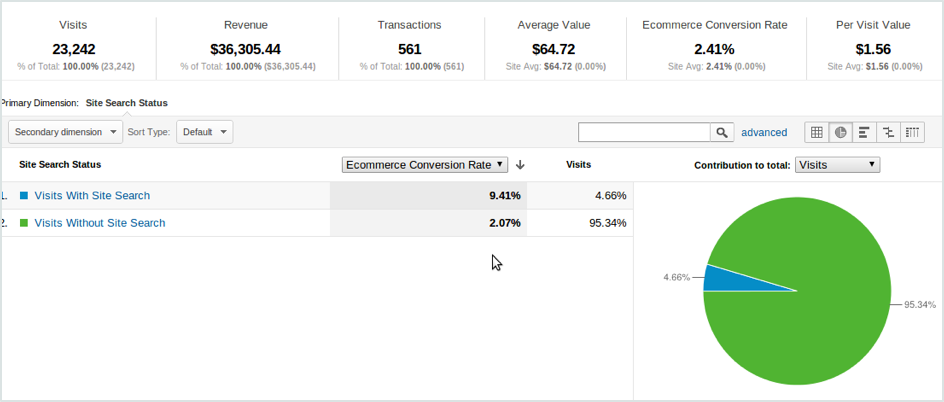
|
6 tips for designing a great search box: 1. Design a box so it stands out graphically and is clearly visible. Visitors should find it immediately. 2. Include helpful text in the search box, such as: "search for products, categories or brands". The text should disappear automatically when the user starts typing. 3. Keep the search box populated with the visitor's search query. That way the user can narrow their search without having to go back and remember what they previously searched. 4. Allow the keyboard enter key to start the search. 5. Adjust the size of the search box. If you have long product names a larger box makes things easier for visitors. 6. Use auto-complete to suggest searchable keywords and phrases after only a few letters have been typed. Include the various categories to help refine search results. |
Finally, providing search that's truly relevant and that learns from user behaviour requires building sophisticated algorithms. So if you aren't keen on hiring in-house mathematicians, consider a service like Loop54 instead.
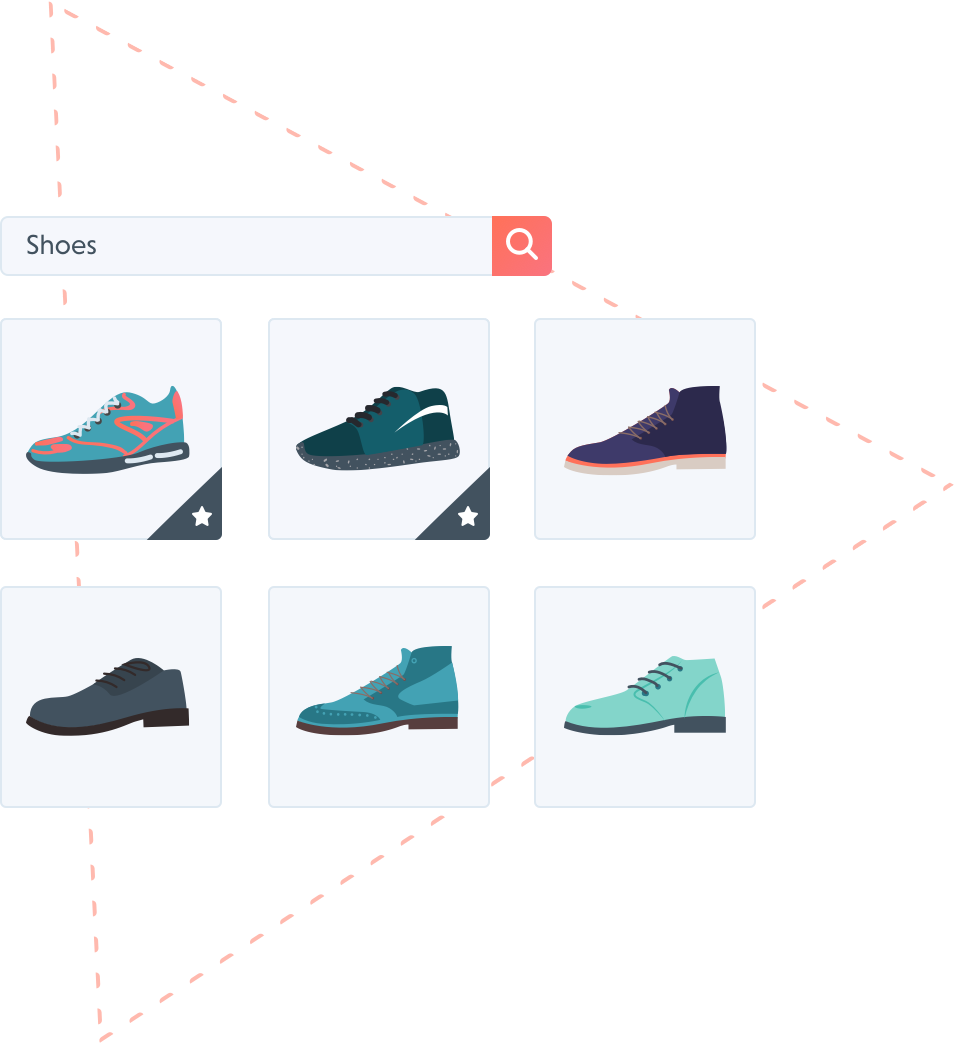
Shoppers expect the same level of relevance and personalisation online as they experience in-store. Powered by Machine Learning and built exclusively for eCommerce, Loop54 delivers that exceptional online shopping experience.